What to eat GEORGIA 🇬🇪 Khachapuri
In Georgia, every village has its own version of khachapuri... In Georgia, the culture of hospitality is truly extraordinary.
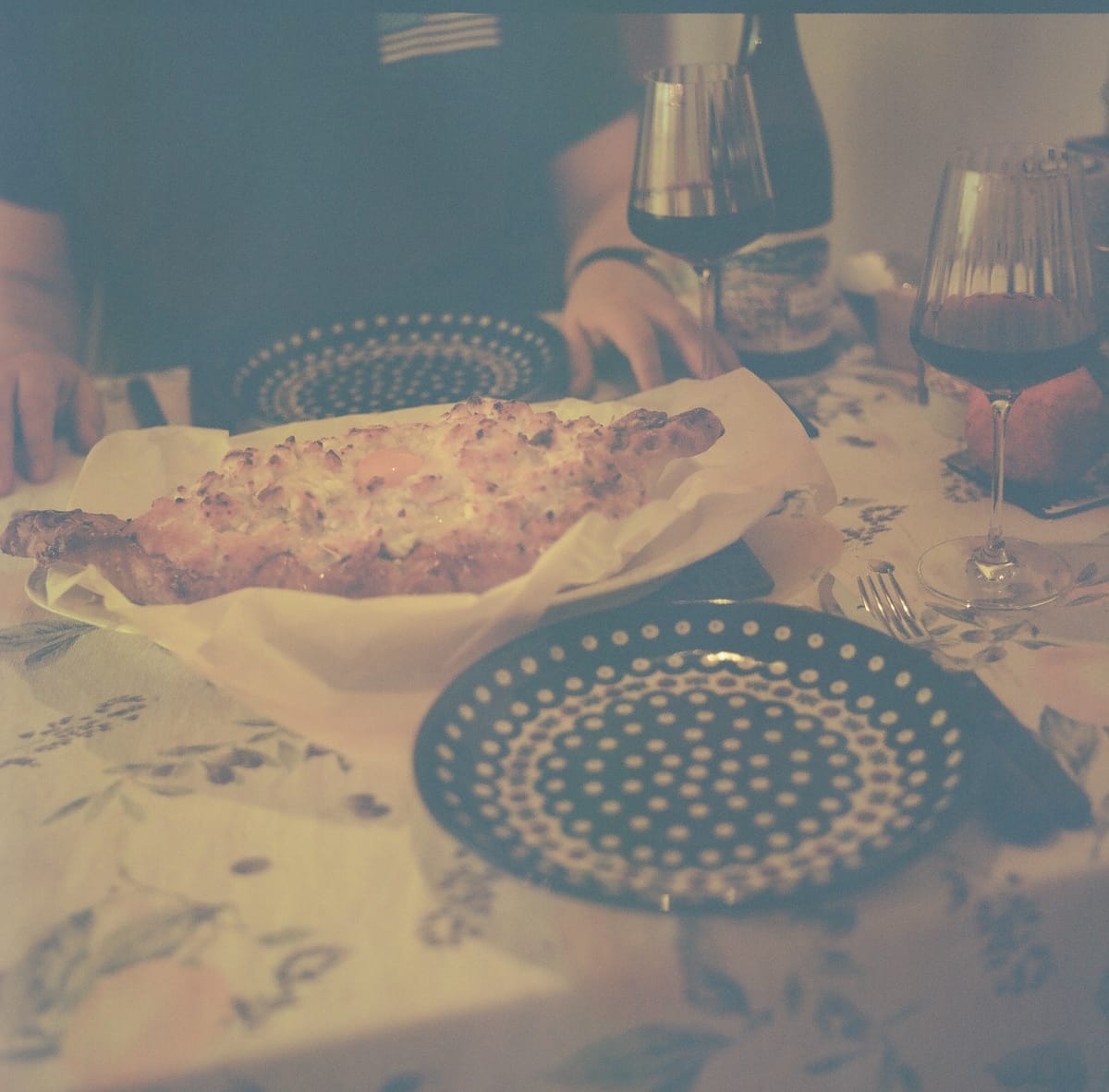
Khachapuri
Published November 29, 2024 · by Amanda Rivkin Häsler
Khachapuri is a Georgian classic that foreigners have nicknamed “cheese boat” for one distinctive variation known as adjaruli khachapuri from the coastal region of Adjara as the dough in this variation is made to form a boat. Once an egg is placed on top, it neatly symbolizes a boat riding into the sunset over the sea.
In Georgia, every village has its own version of khachapuri. While each town and village might have settled on its own way, the effective result with regard to cheese and ingredients might have as much to do with cost and relative availability of ingredients in more agrarian communities.
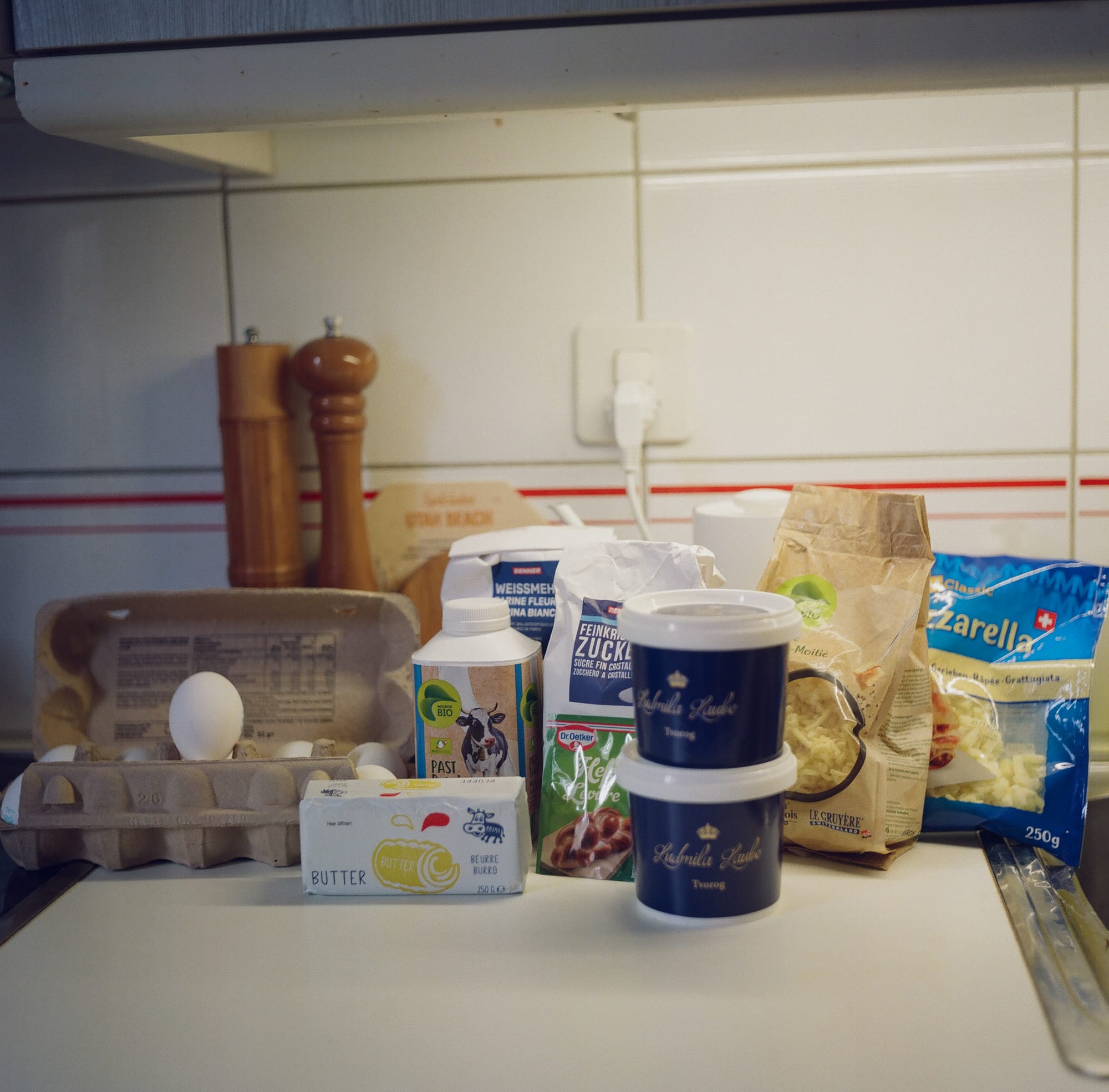
The International School of Economics at Tbilisi State University created the “khachapuri index” modeled after The Economist magazine’s “Big Mac Index” (which actually measures purchasing price parity across nations) to measure inflation in the country. By adding up the cost of the ingredients in the dish and monitoring over time, the khachapuri index is one mechanism for observing not just the state of the economy but what it costs to produce khachapuri in different parts of Georgia.
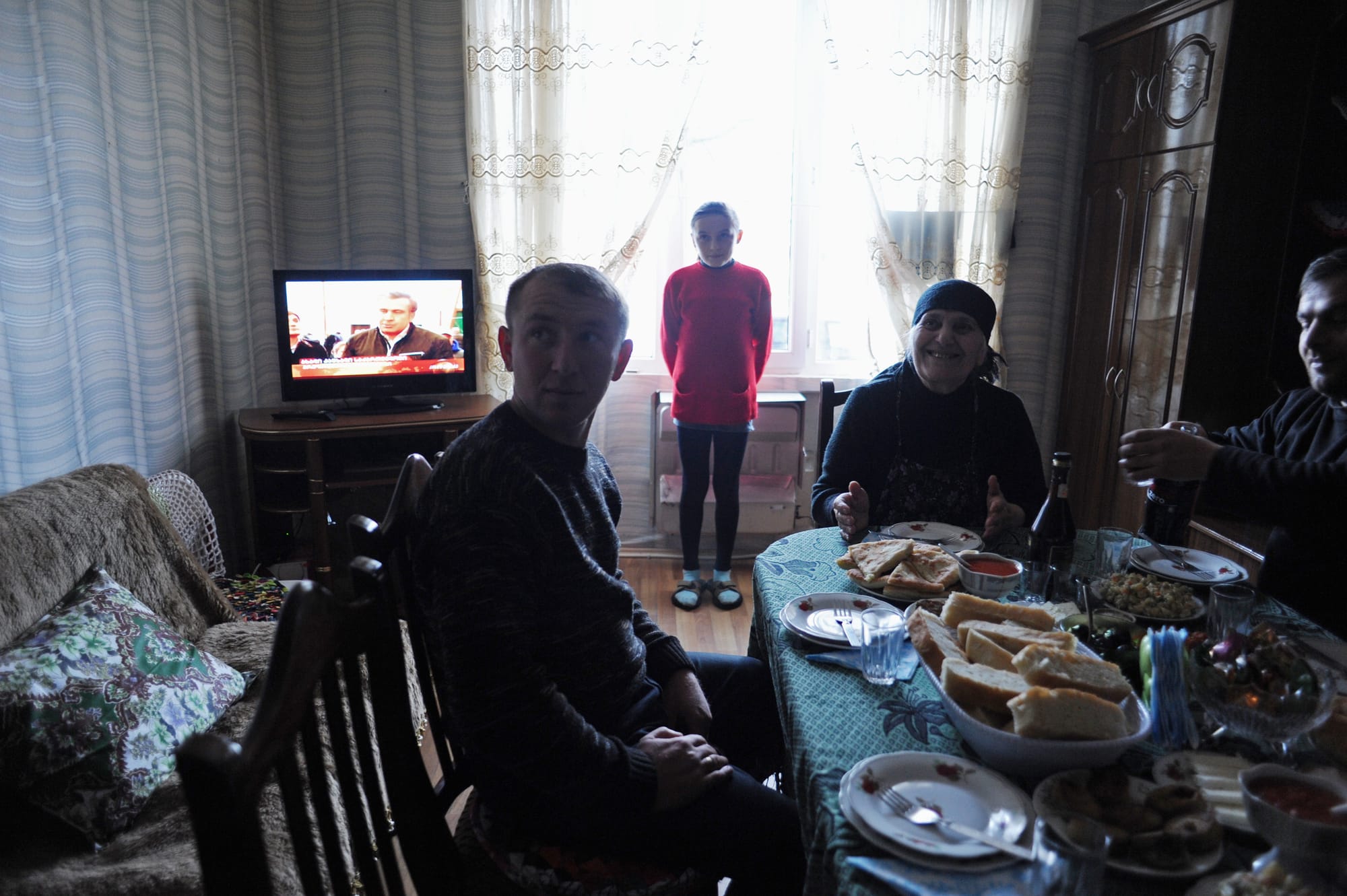
In Georgia, the culture of hospitality is truly extraordinary. As a young journalist, even the poorest internally displaced refugees from the 2008 war with Russia were as welcoming as old friends and family, offering copious amounts of red wine and yes, khachapuri. As a dish, khachapuri is a communal plate. It is offered to be shared and ripped apart as it goes down, likely with some red wine or even chacha, the very strong liquor that might be the second national drink in the wine-growing country of mountains, the Black Sea, and politically contested communities torn between the Russian Soviet past and the European identity and future.
The origins of khachapuri date back centuries, though this makes it difficult to say how exactly the wonderful cheese bread my Swiss husband refers to as “Georgian fondue” came about. There are references to cheese-filled bread appearing in ancient Georgian manuscripts and the word itself can be broken down by khacho meaning cheese and puri meaning bread. Together they form khachapuri or “cheese bread.”
The two main competing theories come courtesy of Darra Goldstein who wrote The Georgian Feast and Dali Tsatava, a former professor at Georgia’s Culinary Academy. Goldstein believes the dish dates back to the twelfth century when Georgian culture experienced a period of renaissance, but the specific origin remains unknown in this theory.
By contrast, Tsatava suggests khachapuri could be pizza’s first cousin, brought to the country by the Romans as they crossed Europe before the sixteenth century arrival of tomatoes in Europe from the New World of the Americas. The two theories do not necessarily contradict one another but neither offers up a satisfying origin story that can be significantly sourced. They are much more a competing mythos than a concrete history.
So, while we may never know the true origin of khachapuri, we know we can enjoy it here and now on this earth, in whatever variation we may find it. Given the early 1990s dissolution of the former Soviet Union, of which the Republic of Georgia was freed from seven decades of occupation by Russia, and the ethnic diversity of the Caucasian nation, the diaspora has spread far and wide and taken with it and transformed khachapuri in many ways.
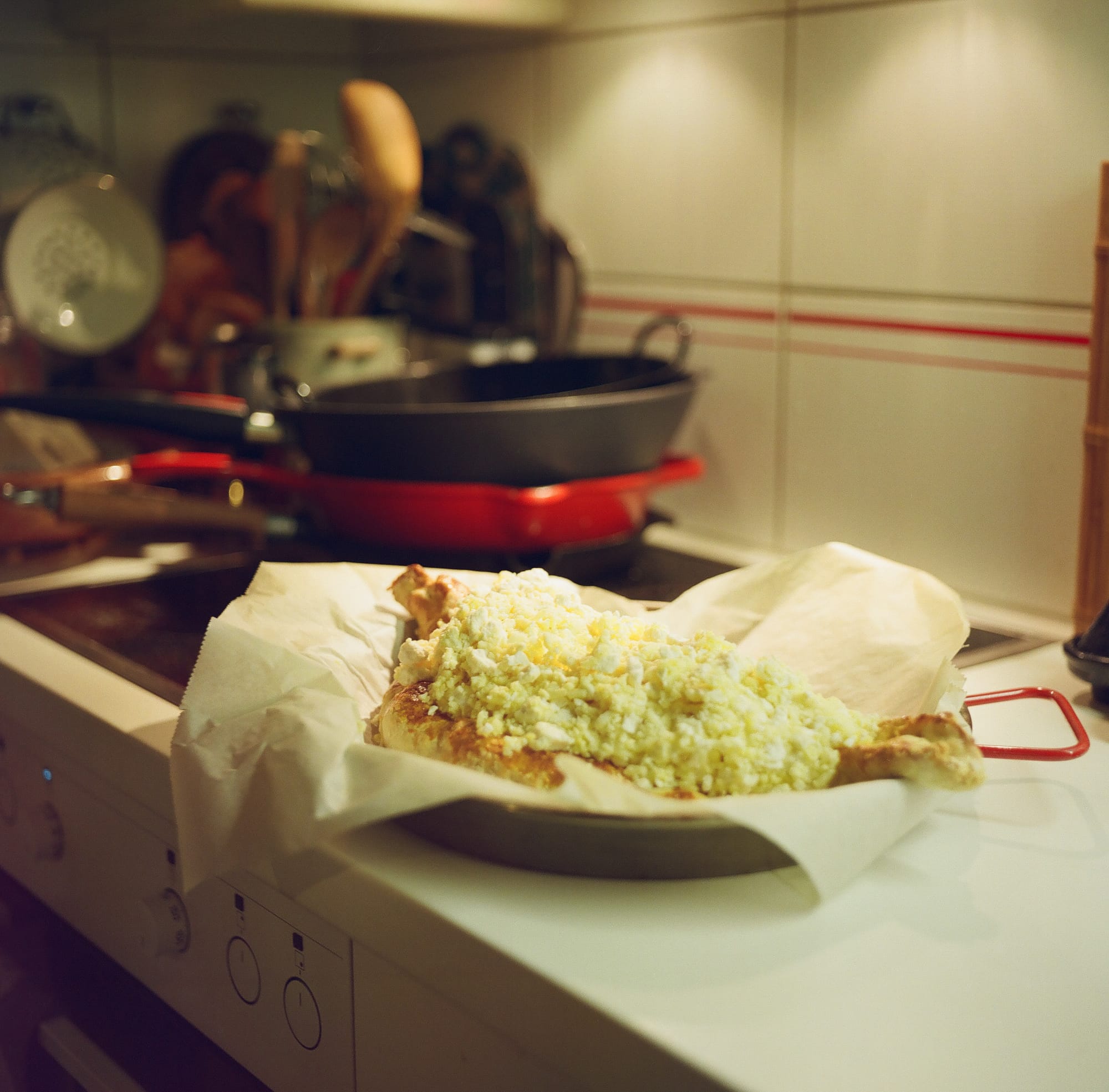
As a conquering power, Russia took much from the countries it occupied and adapted these dishes into local foods many in Russia might know now as their own. World-famous khachapuri is no exception. While the initial invasion of Ukraine and occupation of Crimea and parts of the Donbas occurred during the Sochi Olympics, it is a point of some Georgian culinary pride that 175,000 khachapuris were reportedly served in Sochi during this time.
In Israel, Georgians and other people who immigrated after the dissolution of the Soviet empire brought khachapuri with them as well, where it has been absorbed into the local cuisine and become a popular brunch food.
In America, the largest Georgian community can be found in New York, where the trendy hipster neighborhood Williamsburg is home to an Americanized form of khachapuri on Berry Street. There a family-owned establishment calling itself Cheeseboat serves up such eclectic variations of khachapuri with steak ’n’ mushroom, meatballs, leeks and smoked paprika, honeycomb brie, prosciutto and shrimp (known as the “Bubba Cheeseboat” for the character in the film “Forrest Gump”).
However you khachapuri and wherever you do, feel free to experiment with the cheeses you have available as well as with potential toppings. We tried a few different kinds of cheese a few different ways while perfecting the dough. By far, we preferred a variation with tvarog cheese, a farmer’s cheese popular in Central European countries for pierogi, pelmeni and a Slovak dish known as bryndzove halusky (Slovaks would call the cheese bryndza). Traditionally, Georgians use a cheese called sulguni. Should you know where to obtain it in Switzerland, do drop us a line.
As Georgians say as they toast, to victory, gaumarjos!
Recipe
Ingredients:
One cup water
14 grams yeast
3.5 cups flour
1 tablespoon sugar
1 teaspoon salt
1 tablespoon olive oil
3 eggs
500 grams tvarog or farmer’s cheese
250 grams of mozzarella or 400 grams of moitié-moitié fondue cheese
50 grams of butter
Step 1: Combine room temperature water with yeast, swirling with a finger to activate it and allow to sit 5-10 minutes.
Step 2: Combine dry ingredients, so flour, sugar and salt. Add water with yeast to dry ingredients. Knead until dough forms. Add a bit more water if needed to bring cohesion to the dough. Drizzle with olive oil and cover with plastic and let sit two to two and a half hours until dough doubles in size, more or less.
Step 3: Preheat the oven to 200 degrees Centigrade.
Step 4: Roll out the dough on a floured surface until dough is approximately three to five centimeters in thickness.
Step 5: In a paella pan or baking pan, place a baking sheet. Place the dough on the pan and make a boat shape, rolling the sides in and pinching the ends. Glaze with egg yolk. Place in the oven for 20-25 minutes.
Step 6: In a bowl, combine cheeses. Add the remaining egg white and egg yolk, 1 more egg yolk and 50 grams of butter.
Step 7: Pull the bread boat from the oven when the dough begins to look crispy and fill in the trough with the cheese mixture. Add a pinch of salt and bake for five more minutes.
Step 8: The last and final step is to add an egg yolk in the middle and serve. Use the doughy ends to mix the egg with the cheese and serve.
Tips, tricks and notes:
We tried a few different combinations of cheese over the weeks leading up to publishing this recipe, based on ingredient availability and a desire to experiment and get ever closer to the authentic flavor with available ingredients. Our other experiment included combinations of: 400 grams of moitié-moitié fondue cheese and 500 grams of crumbled ricotta cheese. Tvarog yielded better results than ricotta.
We found tvarog cheese at the Globus Delicatessa in the basement of the department store in Bern, located at Spitalgasse 17/21.
On our Instagram, we also received the following advice:
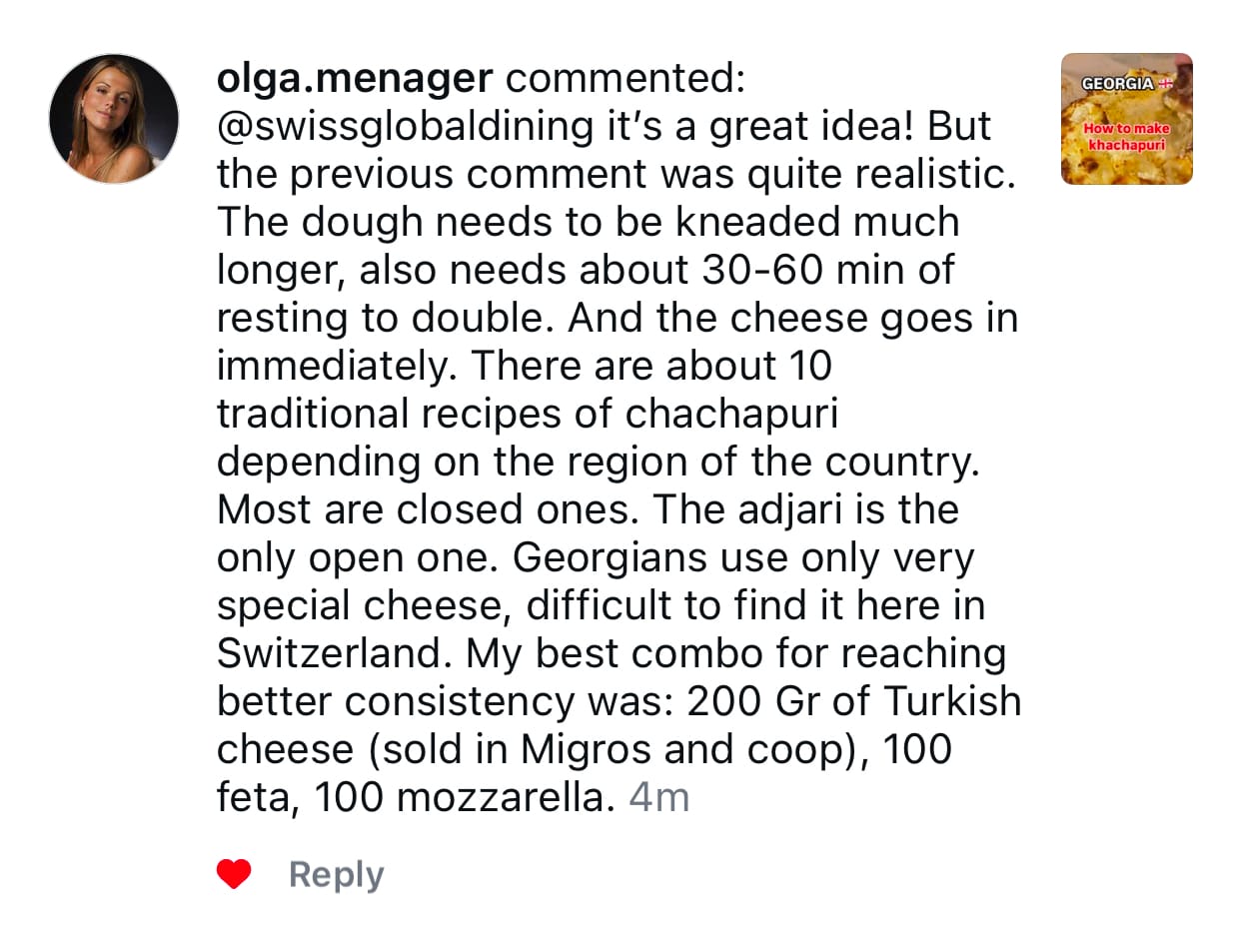
Learn where to eat Georgian food in Switzerland.
Follow our social media pages @swissglobaldining on Instagram, TikTok and YouTube